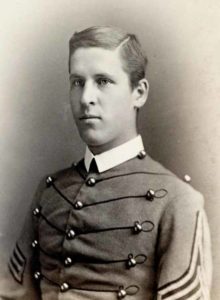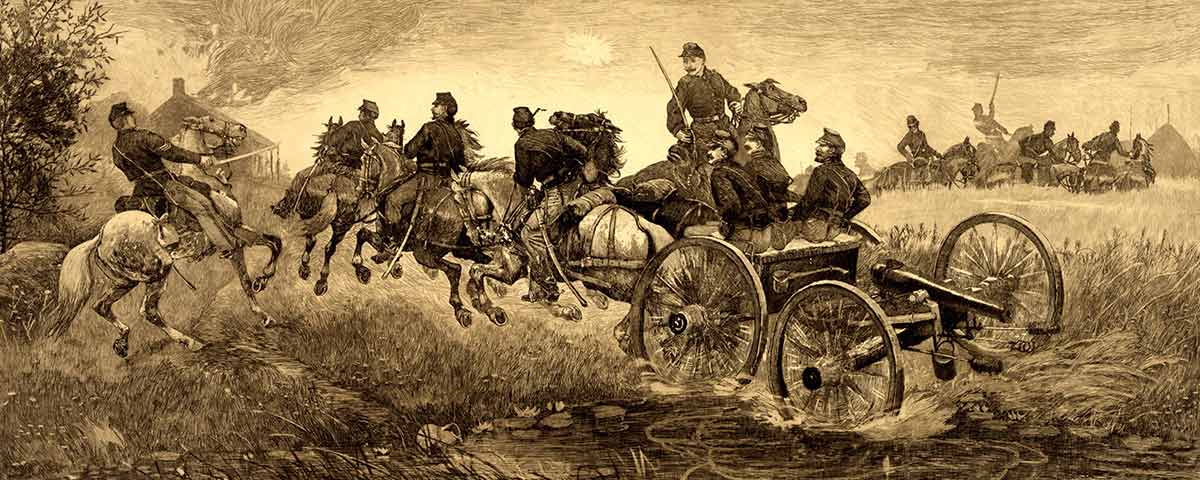John Bigelow’s 1910 Study of Robert E. Lee’s Victory Over Joe Hooker Remains an Exemplar
Tactical and operational studies occupy a prominent place in the literature devoted to the Civil War. Admirable examples of well-researched, analytical military narratives published over the past several decades include Edwin B. Coddington’s pioneering The Gettysburg Campaign: A Study in Command (Scribner’s, 1968), Richard J. Sommers’s detailed Richmond Redeemed: The Siege at Petersburg (Doubleday, 1981), John J. Hennessy’s graceful Return to Bull Run: The Campaign and Battle of Second Manassas (Simon & Schuster, 1993), Albert Castel’s revisionist Decision in the West: The Atlanta Campaign of 1864 (University Press of Kansas, 1992), and Timothy B. Smith’s gripping Shiloh: Conquer or Perish (University Press of Kansas, 2014). Multiple volumes by authors such as Stephen W. Sears, Peter Cozzens, Earl J. Hess, and Gordon C. Rhea underscore the vitality of this genre of Civil War studies.
Coddington’s book, which raised the bar for all subsequent campaign treatments, appeared more than half-a-century after John Bigelow Jr.’s The Campaign of Chancellorsville: A Strategic and Tactical Study set a standard so high it retains a place among the very best works of its kind. Published in 1910 by Yale University Press, Bigelow’s 528-page masterpiece was reissued by Morningside Press in a first-rate reprint in the 1990s (all other reprints, which lack the original’s superlative maps, should be avoided).
Bigelow brought firsthand military experience to his project. A West Pointer who ranked 46th in the Class of 1877, he served with the 9th and 10th U.S. Cavalry in the 1870s and 1880s and received multiple wounds and won a Silver Star at San Juan Hill during the war with Spain. During an assignment to teach military science and tactics at the Massachusetts Institute of Technology in 1894, Bigelow chose Chancellorsville as the “theme for a course of lectures….because that campaign presented a greater variety of military problems and experiences than any other in which an army of the United States had taken part.” In addition, he added, no other battle approaching Chancellorsville “in importance, has been so imperfectly apprehended and described.”

Bigelow mined a range of sources, including regimental histories, memoirs, congressional reports, newspapers, and, most important by far, the Official Records. The recent availability of a mass of reports and correspondence in the Official Records, he observed, allowed him to offer “a certain minuteness of detail” about the campaign. Because of these published documents, he noted approvingly, “no war that has been fought admits of such thorough investigation as our Civil War.” The phenomenon of historians across many generations immersing themselves in the rich bounty of the Official Records really began with The Campaign of Chancellorsville.
Bigelow sought to evaluate commanders in light of what they knew when making decisions. Appreciating what is often termed the “fog of war,” he pronounced it “a common fault of military narration to fail to give the mental point of view and field vision of the opposing commanders.” He sought “to keep the reader informed as to how much or how little each commander knew about the tactical or strategic situation.” Scrupulously fair in assessing leaders on both sides and meticulous in charting the ebb and flow of the action, Bigelow fully met his stated goals “to tell what was done, but also to show how it was done, to present a characteristic, or typical, view of the conditions and methods of troop-leading that obtained during our Civil War.”
Anyone who reads tactical history knows the value of good maps. “I have tried to provide the reader with such maps as he will need,” Bigelow stated with a striking degree of understatement and somewhat obscure phrasing, “but am aware that I have not made his way a royal road.” In fact, the 47 three-color maps in The Campaign of Chancellorsville constitute one of the book’s great strengths, often depicting the tactical situation in 30-minute increments and permitting readers to follow the action very closely. Bigelow credited the maps of Jedediah Hotchkiss, who had been “Stonewall” Jackson’s cartographer, as especially useful in the preparation of his own.
Bigelow’s summary judgments indict Joseph Hooker for fumbling an opportunity to punish Lee and the Army of Northern Virginia. Hooker repeatedly displayed a lack of aggressiveness and strong purpose. The Federal commander’s “irresolution in this campaign was only partially due to the injury he received at the Chancellor House” on the morning of May 4, insisted Bigelow: “It was exhibited…long before he sustained that injury, and would in all probability have lasted through the campaign had he not been injured at all.” To the end, Hooker might have crafted a victory. “No greater mistake was made during the campaign than Hooker’s final one of recrossing the Rappahannock,” Bigelow asserted. “Lee was about to play into his hands by attacking him on his own ground; the condition on which his plan of operation was based was at last to be realized, when he weakly retired from the contest.”
[quote style=”boxed” float=”left”]No war that has been fought admits of such thorough investigation as our civil war[/quote]
Hooker’s post-battle criticism of 6th Corps chief John Sedgwick for not, in effect, saving the larger part of the Army of the Potomac on May 4 rankled Bigelow. “If Hooker, with the mass of the army, could not safely undertake to join Sedgwick when Sedgwick was moving to join him,” Bigelow commented sharply, “it was hardly to be expected that Sedgwick, with a single corps, would succeed in joining Hooker.”
As for Robert E. Lee, Bigelow praised his “brilliant use of interior lines” and pronounced his strategic decisions generally sound and “in accordance with the fundamental principles of war.” Yet the magnitude of the Confederate victory yielded a mixed result. The two months following Lee’s victory marked “the brightest period of the Civil War” for Confederates. “But its brightness,” cautioned Bigelow, “was that of a false and treacherous light. The overconfidence born of the victory at Chancellorsville carried the Army of Northern Virginia against the impregnable front of the Federal lines at Gettysburg.”
Very few scholarly books written a century ago stand up against more modern scholarship. Bigelow’s impressive treatment of Chancellorsville meets that test and merits the attention of anyone seriously interested in the compelling action that unfolded along the Rappahannock River frontier in late April and early May 1863.





